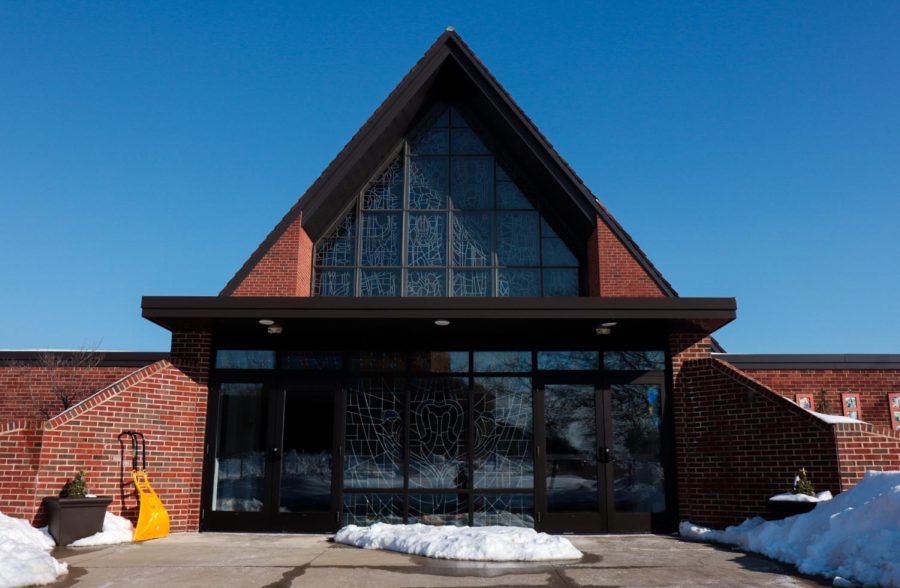In-person options resume for religious groups
The Newman religious center: the official location for Catholic campus ministry at Kent State University.
February 8, 2022
Religious centers at Kent State worked towards alternatives to keep community engagement alive during the COVID-19 pandemic.
The Newman Center, a Catholic institution, and the Hillel Center, a Jewish institution at Kent State, had to switch their activities from in-person to virtual, which led to a change in attendance.
The unsure situation of the start of the pandemic made Newman Center shut down all its activities.
“But slowly we started to come back,” said Rev. Chad E. Johnson, the parochial vicar. “If I remember correctly, it was in May of 2020, so we had limited capacity and all people were masked, but even then, some of the other activities really didn’t come back yet.”
The Hillel Center celebrates its Shabbat every Friday; it’s a chance for the members to connect by having dinner and meeting with friends. It also had to adapt its meetings last year.
“We would typically do our larger gatherings on Zoom, but we would still offer opportunities for people to pick something up in person and see their friends,” said Adam Hirsh, the center’s executive director.
In Shabbat dinner or holiday celebrations, if there were craft activities or book clubs, there would have always been the opportunity to go to Hillel, or they would deliver them to the members, even the ones who live out of state.
While the transition to in-person continues, the variants spreading out made everything uncertain again.
One effect of this is the lower attendance at the Newman Center. The number of attendees is not the same as it was before the pandemic, Johnson said.
The parochial vicar, who is the priest assigned to the parish of Newman Center, joined the community in July 2021, so he has only experienced a pandemic environment.
“We’re probably at about half, if I had to guess based on what staff said… half to three quarters have come back to participate, at least in some way in the life of the parish,” Johnson said. “But we’re definitely not back to where we were before the pandemic began.”
In contrast, Hillel had about the same number of members participating, but fewer people in the physical place.
“The only decrease that I’ve really seen is less friends of Jewish students coming around and less community members,” Hirsh said. “But Jewish student wise, our participation has stayed where it was throughout the pandemic.”
Both centers are encouraging the members to do what’s best for their safety.
“Now we’re really trying to do whatever we can in person,” Hirsh said. “But also still leave that open for those that aren’t comfortable gathering.”
Nathalia Joucoski Teixeira is a reporter. Contact her at [email protected].












